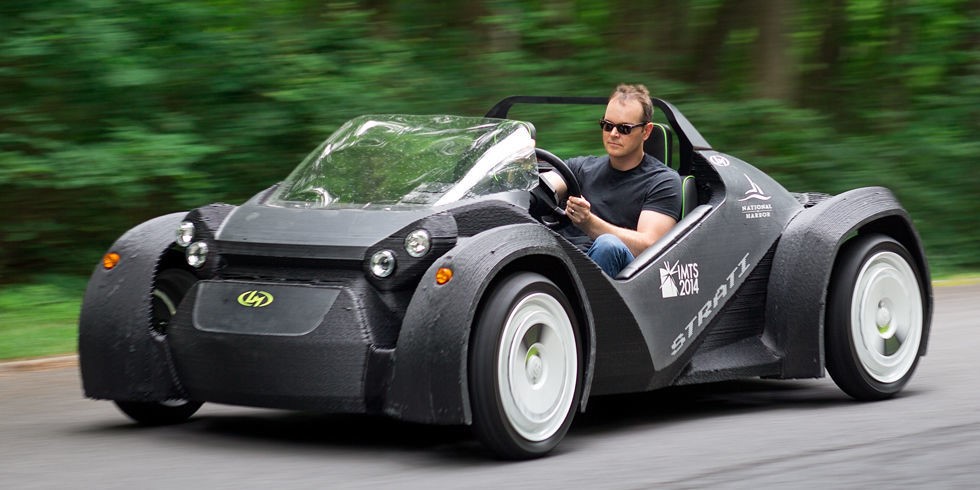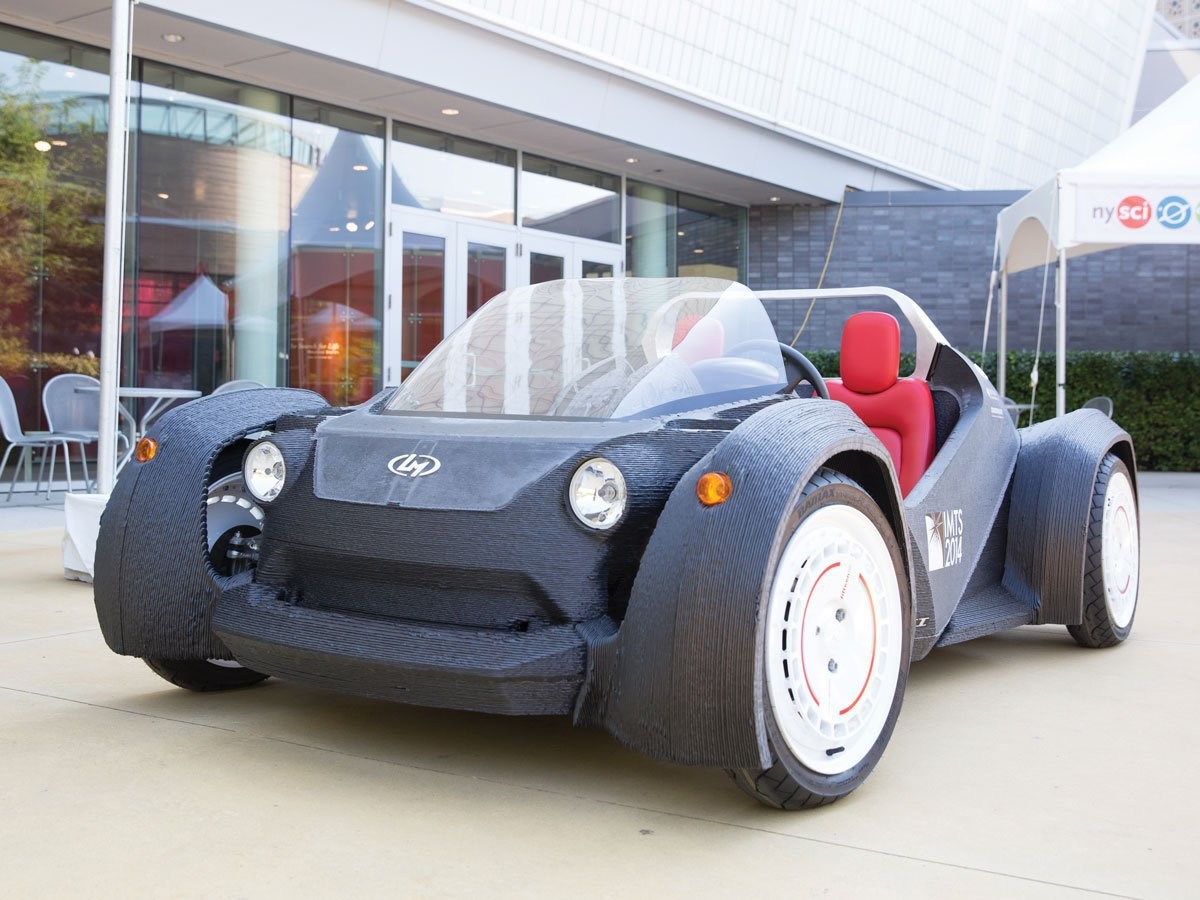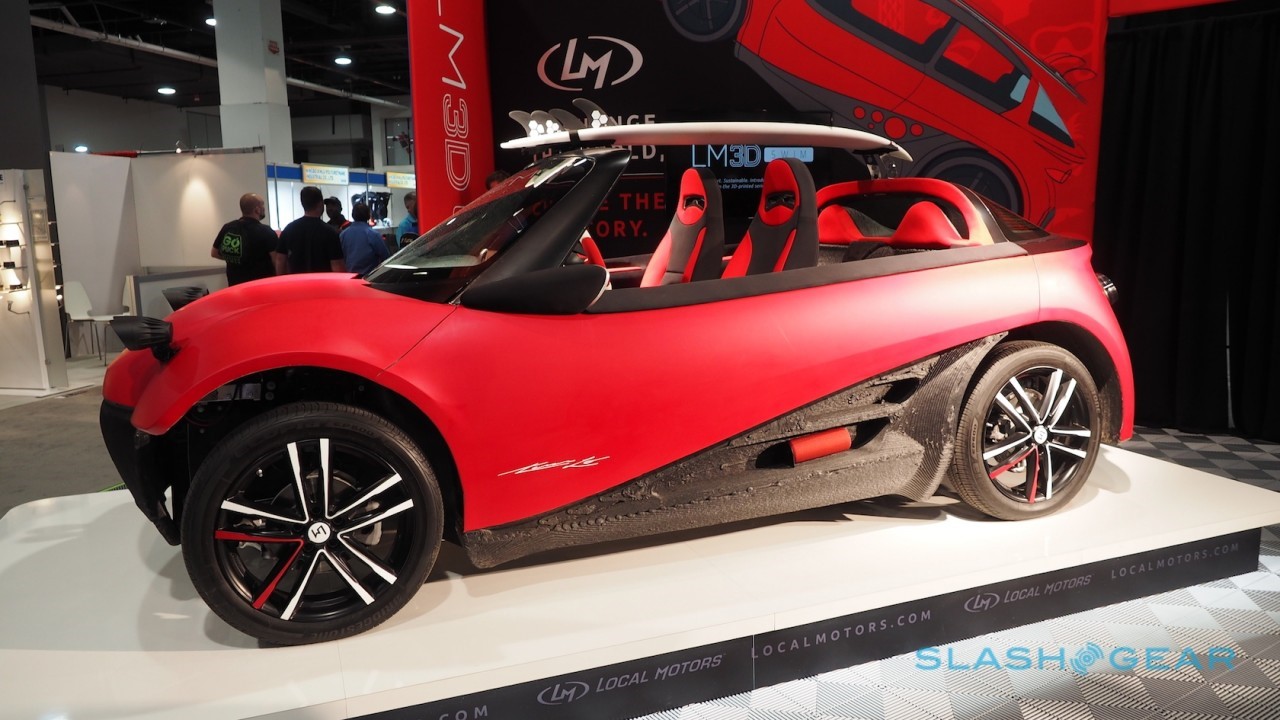
Image via Popular Mechanics
Homemade DIY vehicles as always been an outlying hobby, lurking in at the periphery of some Eastern European village or the garage of some remote North American township. As advanced resources have streamlined 3D printing and allowed for increasingly complex additive printing and accessibility, these enterprising spirits will one day be able to print their car, sans engine and tires. Until then we’ll have to settle for the Showcase models built by established companies like Local Motors.
The first ever 3D printed car is the Strati, an odd vehicle printed and assembled by Local Motors in Detroit. Aiming to create a standard in 3D printing vehicles, the Strati is mechanically feasible and drivable with a stand-in electric golf cart motor, albeit, a bit crude looking; its dashboard looks like a heap of melted plastic with not much else going for it.

Image via Makezine
Strati was printed over the course of 44 hours using a massive BAM “Big Area Addictive Manufacturing” machine, which is just that, a large-scale additive 3D printer that can produce thermoplastic components as large as one cubic meter. Once the chassis is printed, a computer numerical control routing machine or a CNC mill subtracts various excess material to further give it shape and construct the one-piece body. Then, over the course of five days, the remaining components were added resulting in a functional, yet rudimentary vehicle.
Local Motors hopes to upscale the technology to someday be able to not only offer car customization, but cut manufacturing reduce manufacturing costs so that users can easily order the version they want, and in a few days, have the whole thing printed and assembled.
LM3D Swim
Like the Strati before it, Local Motors’ LM3D Swim is also a hybrid 3D printed vehicle consisting of 3D printed components assembled with traditional auto components that cannot be fabricated in this manner – drivetrain, steering components, tries, wheels, and the engine. But unlike the Strati, LM3D Swim is an actual consumer product aimed to hit the mass market in 2017.

Image via Slashgear
The vehicle will be primarily made from a material composition consisting of 80% thermoplastic polymer (acrylonitrile butadiene styrene, or ABS) and 20% carbon fiber. In fact, 75% of the parts are 3D printed, but Local Motors hopes to eventually push this to 90%. LM3D will not be printed using the BAM technique; instead, Local Motors is opting for the traditional approach of multi-part printing to increase safety and grant customers customization over exterior panels.
LM3D Swim is currently undergoing crash testing with the goal of obtaining earning federal safety approval and highway certifications by 2016.
Source: Popular Mechanics and Ceramic-Tech
Advertisement
Learn more about Electronic Products Magazine





